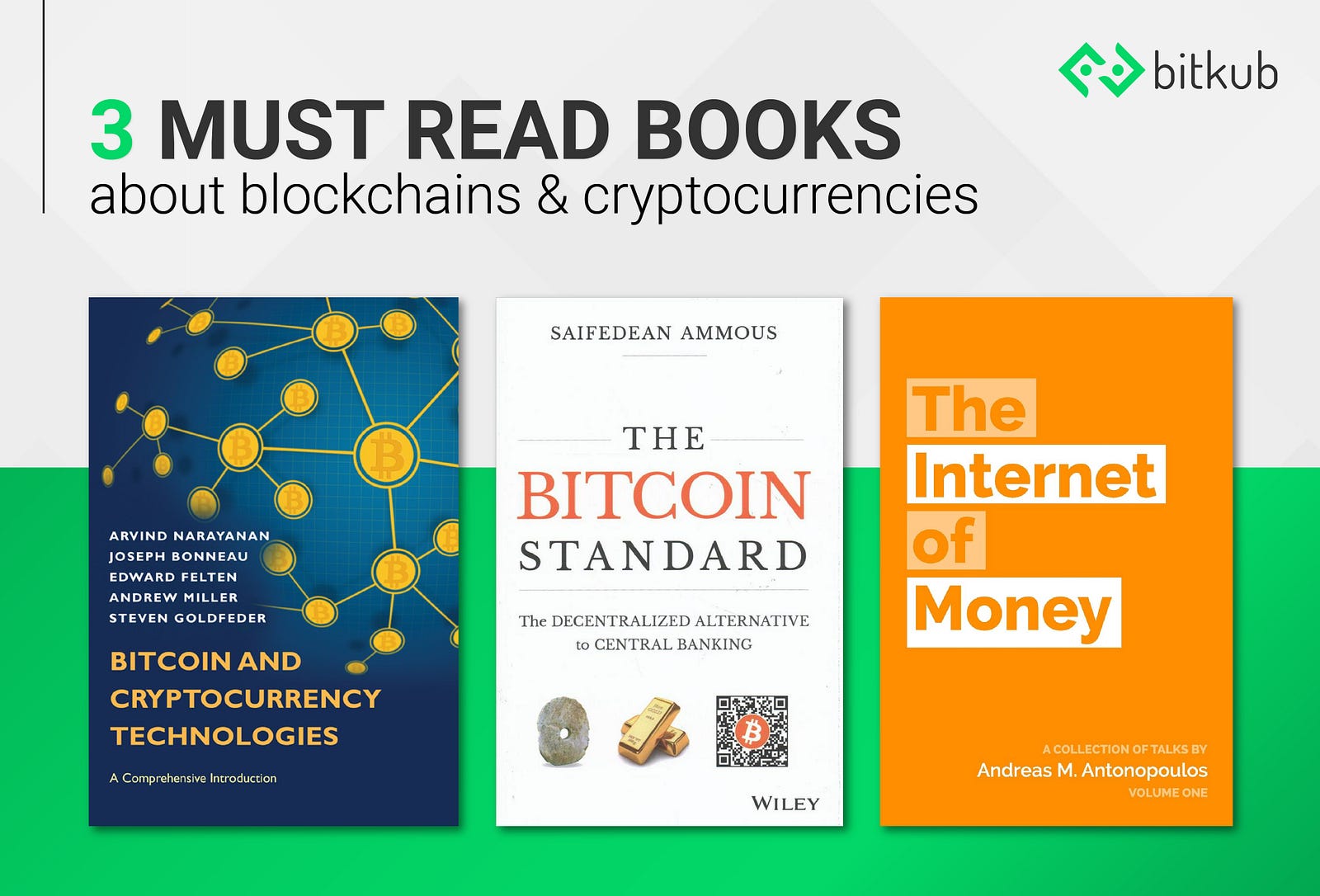Download App
Blog
หนังสือคริปโต 3 เล่มที่คุณควรอ่าน!

คุณอยากเรียนรู้เพิ่มเติมเกี่ยวกับ บล็อกเชนและคริปโตเคอเรนซี่รึเปล่า ? ถ้าใช่เรามีข่าวดีจะบอก! ทางทีมงานได้ค้นพบหนังสือต่างชาติ 3 เล่มที่มีการพูดถึงกันบอกที่สุดในบล็อกและฟอรั่มต่างๆที่จะช่วยให้คุณเดินทางไปสู่ยุคฟินเทคในอนาคต
Bitcoin and Cryptocurrency Technologies — เป็นหนังสือเล่มแรกที่เหมาะสำหรับผู้ที่กำลังจะเข้าวงการบล็อกเชนและคริปโต หนังสือเล่มนี้ถูกเขียนโดย Arvind Narayana ผู้ช่วยศาสตราจารย์ มหาวิทยาลัย Princeton ซึ่งจะช่วยให้ผู้อ่านเข้าใจเกี่ยวกับเทคโนโลยีมากขึ้นรวมถึงประโยชน์ของความเป็นส่วนตัวและการกระจายอำนาจในบล็อกเชน
The Bitcoin Standard — หนังสือเล่มนี้ถูกเขียนโดย Safedean Ammous นักเศรษฐศาสตร์ ซึ่งมองเห็น Bitcoin เป็นเงินในอนาคตและเป็น “เทคโนโลยีที่เพอร์เฟค” หนังสือนี้ได้อธิบายถึงวิวัฒนาการด้านการเงินและอะไรที่ทำให้เงินตราในปัจจุบันนี้มีมูลค่าทั่วโลก หนังสือเล่มนี้เหมาะสำหรับผู้ที่รู้จัก Bitcoin ในระดับหนึ่งและอยากเรียนรู้เพิ่มเติม
The Internet of Money — หนังสือเล่มนี้ถูกเขียนโดย Andres Antonopoulos ที่อธิบายว่าเพราะอะไร Bitcoin ถึงเป็นเงินในอนาคต และเทคโนโลยี Bitcoin จะมาเปลี่ยนแปลงระบบการจ่ายเงินรวมถึงการชีวิตของผู้คน หนังสือเล่มนี่เหมาะสำหรับผู้คนที่เพิ่งเริ่มทำความรู้จัก Bitcoin และสำหรับผู้ที่มีประสบการณ์ลงทุนที่ไม่ดีซักเท่าไหร่
Do you want to learn more about the blockchain and cryptocurrency? If yes then we have good news for you! We found 3 self-help books rated the highest in several cryptocurrency based forums that can assist you in your fintech journey!
Bitcoin and Cryptocurrency Technologies — This book is a great choice for people who just started to get into the Blockchain and Cryptocurrency space. It is written by Arvind Narayana an assistant professor at Princeton. It can give you a general understanding of Bitcoin and other cryptocurrency technologies. The book also explains the key ideas of blockchain’s privacy feature and decentralization.
The Bitcoin Standard — The Bitcoin Standard is written by Safedean Ammous an academic economist who sees Bitcoin as the money of the future and “the perfect technology”. The book explains the evolution of money and what makes hard money “hard”. It is a good book for all those who already have some basic knowledge about bitcoin but would like to dive deeper.
The Internet of Money — A book written by Andreas Antonopoulos that explains Bitcoin as the future money in a non-technical way. He also discussed how Bitcoin technology will revolutionize the payment system and the lives of everyone. If you are not sure to invest in cryptocurrency and blockchain, this book could be something for you. A great book for those which just have started, and as well for people which may had some bad experiences in the past with crypto .
Source:
Medium